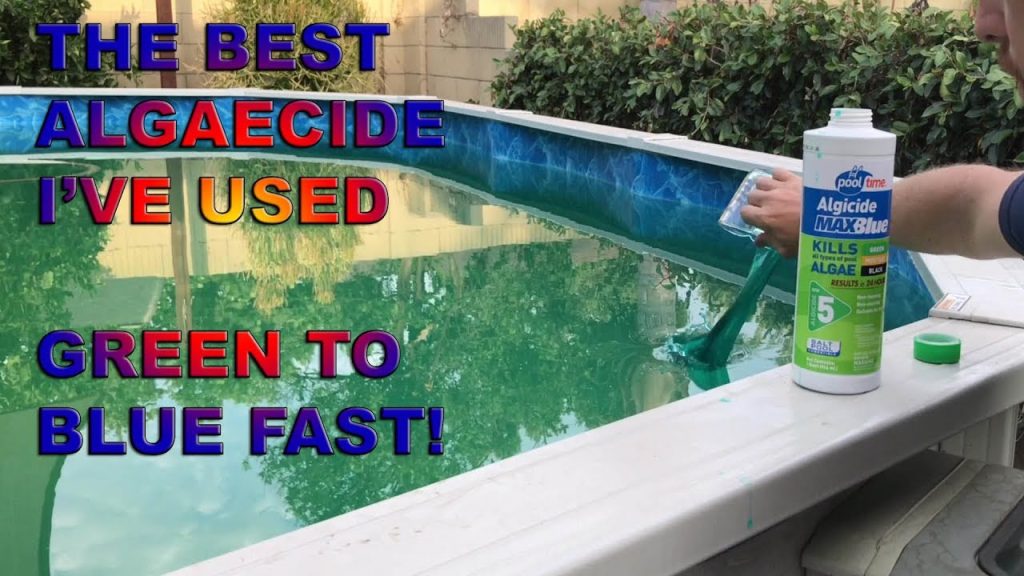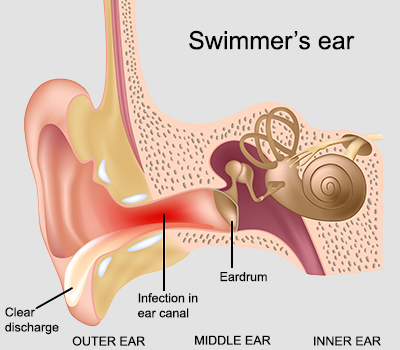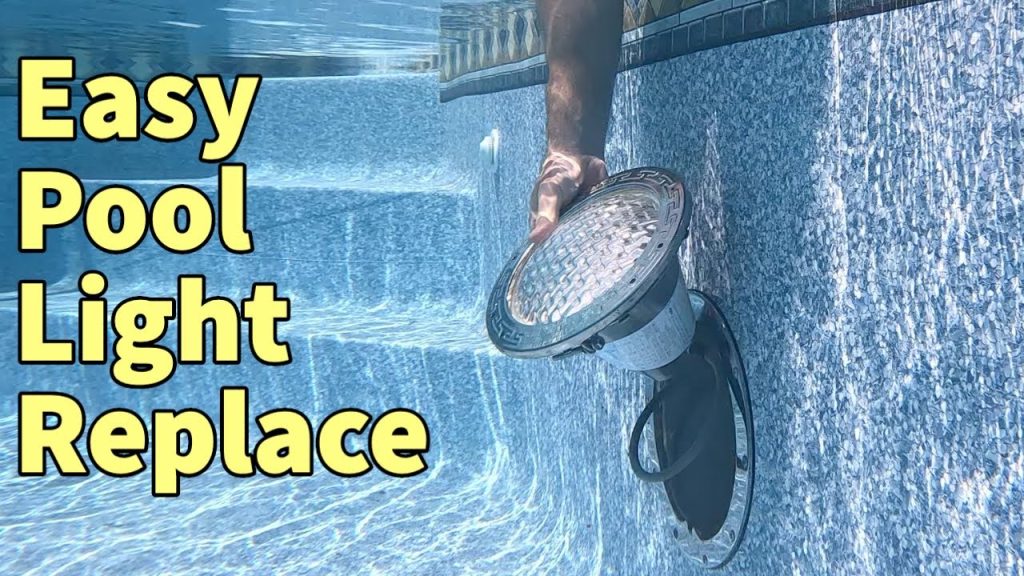To clean algae from a swimming pool, you need the right tools and techniques. Algae can make your pool look dirty and unsafe.
It can also cause health problems. Algae growth is a common issue for pool owners. It turns the water green and makes surfaces slippery. Cleaning algae involves a few steps. You must brush the pool walls and floors. Then, use a good algaecide and shock the pool.
Finally, you must run the filter to clear out dead algae. Regular maintenance can help prevent algae from coming back. This guide will walk you through the process of cleaning algae from your pool. Keep your pool crystal clear and safe for swimming.
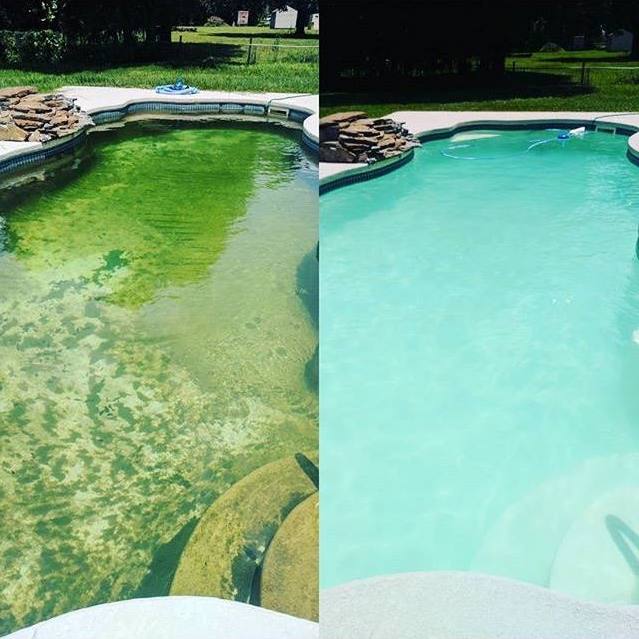
Credit: pinchapenny.com
Introduction To Algae Issues
Algae issues in swimming pools can be a common headache for pool owners. Algae can turn your crystal-clear pool into a green mess. It also creates slippery surfaces that can be dangerous. Understanding algae and its growth can help you tackle this problem effectively.
Types Of Algae
Different algae types can invade your pool. The most common types are green, yellow, and black algae. Green algae float freely and make the water murky. Yellow algae cling to walls and steps, giving a mustard-like appearance. Black algae appear as dark spots and are tougher to remove. Knowing the type of algae helps choose the best treatment.
Causes Of Algae Growth
Several factors contribute to algae growth. One main cause is poor water circulation. Stagnant water provides a perfect breeding ground. Imbalanced pool chemicals also play a big role. Low chlorine levels and high pH create an inviting environment for algae. Warm temperatures and sunlight further promote algae growth. Regular maintenance can prevent these issues.
Essential Tools And Supplies
Cleaning algae from a swimming pool requires the right tools and supplies. This section will guide you through the essential equipment and chemical treatments. Using the correct tools ensures effective algae removal. Let’s dive into the details.
Cleaning Equipment
Having the right cleaning equipment is crucial. Here’s what you’ll need:
- Pool Brush: A sturdy brush helps scrub algae from pool surfaces.
- Vacuum: A pool vacuum removes debris and algae from the bottom.
- Skimmer: A skimmer net collects floating algae and debris.
- Telescopic Pole: Attach cleaning tools to reach all areas of the pool.
- Pool Pump: Ensures water circulation and helps filter out algae.
Use these tools together for best results. Consistent cleaning keeps your pool algae-free.
Chemical Treatments
Chemical treatments are vital for algae removal. Here’s a list of essential chemicals:
- Chlorine: The most common and effective algae killer.
- Algaecide: Specifically designed to target and prevent algae growth.
- pH Balancer: Maintains the water’s pH level, which helps chlorine work effectively.
- Shock Treatment: A high dose of chlorine to kill persistent algae.
- Clarifier: Helps clear cloudy water by binding tiny particles together.
Follow the instructions on each chemical. Use them in the correct amounts. Regular chemical maintenance keeps your pool water clean and clear.
Preparing The Pool For Cleaning
Cleaning algae from your swimming pool can be a daunting task. But with proper preparation, the job becomes much easier. Before diving into the cleaning process, it’s essential to prepare your pool adequately. This ensures that the cleaning process is effective and safe. Follow these steps to get your pool ready for algae removal.
Safety Precautions
Safety is paramount when dealing with pool chemicals. Always wear protective gear like gloves and goggles. These prevent chemicals from harming your skin and eyes. Make sure the pool area is well-ventilated. This helps to avoid inhaling harmful fumes. Keep children and pets away from the pool during the cleaning process. They could accidentally ingest or come into contact with chemicals.
Initial Water Testing
Testing the pool water is crucial before starting the cleaning process. Use a pool test kit to check the water’s pH and chlorine levels. Ideal pH levels should be between 7.2 and 7.6. Proper pH levels ensure the effectiveness of the cleaning chemicals. Check the chlorine level to ensure it is adequate for algae treatment. Adjust the levels if necessary to prepare the pool for cleaning.

Credit: m.youtube.com
Manual Cleaning Techniques
Keeping your swimming pool free from algae is crucial for a clean and safe swimming environment. Manual cleaning techniques are effective and allow you to control the process. This section will guide you through the essential steps of manual cleaning, focusing on brushing the pool and vacuuming algae.
Brushing The Pool
Brushing the pool is the first step in manual cleaning. It helps loosen algae stuck to the pool surfaces.
Use a pool brush with stiff bristles. Brush all pool surfaces, including walls, floors, and steps. Pay special attention to corners and shaded areas where algae grow.
Brush in a systematic pattern. This ensures you cover every inch of the pool. Make sure to brush firmly to dislodge stubborn algae.
For best results, brush the pool at least twice a week. This helps prevent algae build-up and keeps your pool sparkling clean.
Vacuuming Algae
After brushing, vacuuming the pool removes the loosened algae. Use a manual pool vacuum for this task.
Connect the vacuum to your pool’s filtration system. Start at the shallow end and move slowly to the deep end. This ensures you collect all the algae.
Vacuum the pool in overlapping passes. This prevents missing any spots. Take your time and make sure to vacuum the entire pool.
After vacuuming, clean the filter to remove any trapped algae. This keeps your filtration system working efficiently.
Repeat the vacuuming process at least once a week. This helps maintain a clean and algae-free pool.
Chemical Treatment Steps
Cleaning algae from a swimming pool requires specific chemical treatments. Understanding the right steps ensures a clear and safe pool. Below are the crucial steps for treating algae chemically.
Shocking The Pool
Shocking the pool means adding a large dose of chlorine. This helps to kill the algae. Follow these steps:
- Measure the pool’s water volume. This helps in adding the right amount of chlorine.
- Use a chlorine shock product. Refer to the product instructions for the amount.
- Turn on the pool pump. It helps to circulate the chlorine throughout the pool.
- Add the chlorine shock directly to the pool water. Spread it evenly around the pool.
- Let the pump run for at least 8 hours. This ensures thorough circulation.
Algaecide Application
After shocking the pool, the next step is to apply an algaecide. Algaecide helps to prevent future algae growth. Follow these steps:
- Select a suitable algaecide. There are many types, so choose one that fits your pool needs.
- Read the product instructions. This ensures you use the correct amount.
- Pour the algaecide around the edges of the pool. This helps to distribute it evenly.
- Keep the pump running. Run it for at least 24 hours to ensure proper mixing.
These chemical treatment steps are key to maintaining a clean and algae-free pool. Regular maintenance and proper chemical balance help in keeping your pool pristine.
Balancing Pool Chemistry
Maintaining the right chemical balance is key to keeping your pool clean. Algae thrive in unbalanced water. Proper chemistry helps prevent this growth. This section covers the essential aspects of balancing pool chemistry.
Ph Levels
Maintaining the right pH level in your pool is critical. A balanced pH keeps your water clear and safe. The ideal pH range for pool water is between 7.2 and 7.6. Use a pH testing kit to check the levels regularly. If the pH is too high, add a pH reducer. If it’s too low, add a pH increaser. Keeping the pH in this range helps chlorine work effectively.
Chlorine Maintenance
Chlorine is essential for killing algae and bacteria. Keep chlorine levels between 1.0 and 3.0 parts per million (ppm). Regularly test the water to ensure chlorine is within this range. If chlorine levels drop, use chlorine tablets or liquid chlorine to adjust them. Shock your pool with a higher dose of chlorine once a week. This helps destroy any remaining algae spores.
Preventive Measures
Preventing algae growth in your swimming pool is easier than you think. By following some simple preventive measures, you can keep your pool clean and clear. Consistent care will save you time and trouble in the long run.
Regular Maintenance
Regular maintenance is key to preventing algae. Skim the pool daily to remove leaves and debris. Brush the walls and floor of the pool once a week. This helps stop algae from clinging to surfaces. Vacuum the pool weekly to remove dirt and particles that may feed algae growth.
Proper Filtration
Proper filtration ensures your pool stays clean. Run the pool filter for at least 8 hours a day. This keeps water circulating and helps prevent algae from settling. Clean the filter regularly to maintain its efficiency. Check the filter system for any clogs or issues. A well-maintained filter is crucial for a clean pool.
Dealing With Persistent Algae
Persistent algae can be a nightmare for pool owners. This stubborn problem can turn your beautiful pool into a green mess. Effective algae removal demands patience and the right technique.
Identifying Problem Areas
First, find where algae are most persistent. Check corners, steps, and other shaded areas. Algae love these spots because they get less sunlight.
Use a pool brush to scrub these areas. A good brush will remove algae clinging to surfaces. Repeat this process until the algae start to come off easily.
Next, test your pool water. Use a pool test kit to check pH, chlorine, and alkalinity. Imbalanced water can help algae grow. Adjust your chemicals to the recommended levels.
Finally, clean your pool filters. Algae can clog filters, reducing their effectiveness. A clean filter helps keep your pool algae-free.
Professional Help
Sometimes, algae problems need professional help. Pool experts have the right tools and knowledge to handle persistent algae.
- Inspection: A professional will inspect your pool and identify problem areas.
- Treatment: They use specialized chemicals that are not available in stores.
- Maintenance: Regular professional maintenance can prevent algae from returning.
Hiring a professional can save you time and effort. It ensures your pool stays clean and safe.
| Problem | Solution |
|---|---|
| Persistent Algae | Scrub affected areas, balance chemicals, clean filters |
| Recurring Algae | Seek professional help, use specialized treatments |
Dealing with persistent algae can be tough. But with the right approach, you can enjoy a clean pool.
Long-term Pool Care Tips
Maintaining a pristine swimming pool requires consistent effort. Long-term pool care is crucial. Here, we’ll cover essential tips to keep algae at bay. Follow these tips to ensure a sparkling pool all year round.
Routine Inspections
Performing routine inspections is vital. Check your pool for algae growth weekly. Look for green, black, or yellow spots on the walls and floor. Use a pool brush to scrub these areas. Routine checks help catch issues early. This saves time and money.
Also, inspect your pool’s filtration system. A well-functioning filter removes algae spores. Clean or replace filters as needed. Make sure the pump is running smoothly. Proper circulation prevents algae buildup.
Seasonal Cleaning
Seasonal cleaning is essential for long-term pool care. At the start of each season, give your pool a thorough clean. Remove debris from the water. Skim the surface and vacuum the pool floor. Clean the walls with a pool brush.
Consider shocking your pool. This involves adding a high dose of chlorine. It kills bacteria and algae. Follow the manufacturer’s instructions for the right amount.
Test the water’s pH levels. Ensure it’s between 7.2 and 7.6. Algae thrive in unbalanced water. Use pool chemicals to adjust the levels if necessary.
| Task | Frequency |
|---|---|
| Inspect for algae | Weekly |
| Clean filters | Monthly |
| Shock the pool | Seasonally |
| Test pH levels | Weekly |
Follow these long-term pool care tips to keep your pool algae-free. Regular maintenance is the key to a healthy, sparkling pool.
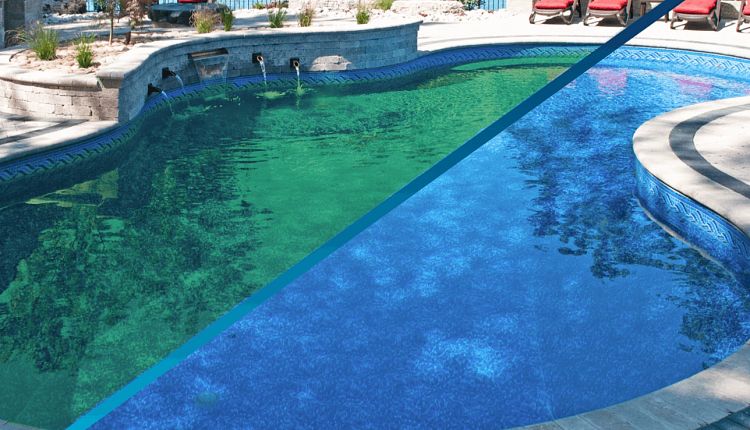
Credit: www.lathampool.com
Frequently Asked Questions
What Causes Algae In Swimming Pools?
Algae in swimming pools are often caused by poor sanitation, inadequate filtration, and imbalanced water chemistry. Regularly maintaining your pool can prevent algae growth.
How Do I Remove Algae From My Pool?
To remove algae, brush the pool surfaces, shock the pool with chlorine, and run the filter continuously. Repeat if necessary.
Can I Swim In A Pool With Algae?
It’s not recommended to swim in a pool with algae. Algae can harbor harmful bacteria and make the pool slippery and unsafe.
How Often Should I Clean My Pool To Prevent Algae?
Clean your pool weekly to prevent algae growth. Regular brushing, vacuuming, and maintaining proper chemical levels are essential.
Conclusion
Keeping your swimming pool algae-free doesn’t have to be hard. Regular cleaning and proper maintenance are key. Use the right chemicals and tools. Check your pool’s pH and chlorine levels often. Brush and vacuum the pool weekly. These steps help you enjoy a clean, safe swimming pool.
So, stay consistent and vigilant. Your pool will remain a refreshing retreat. Enjoy your swim!

